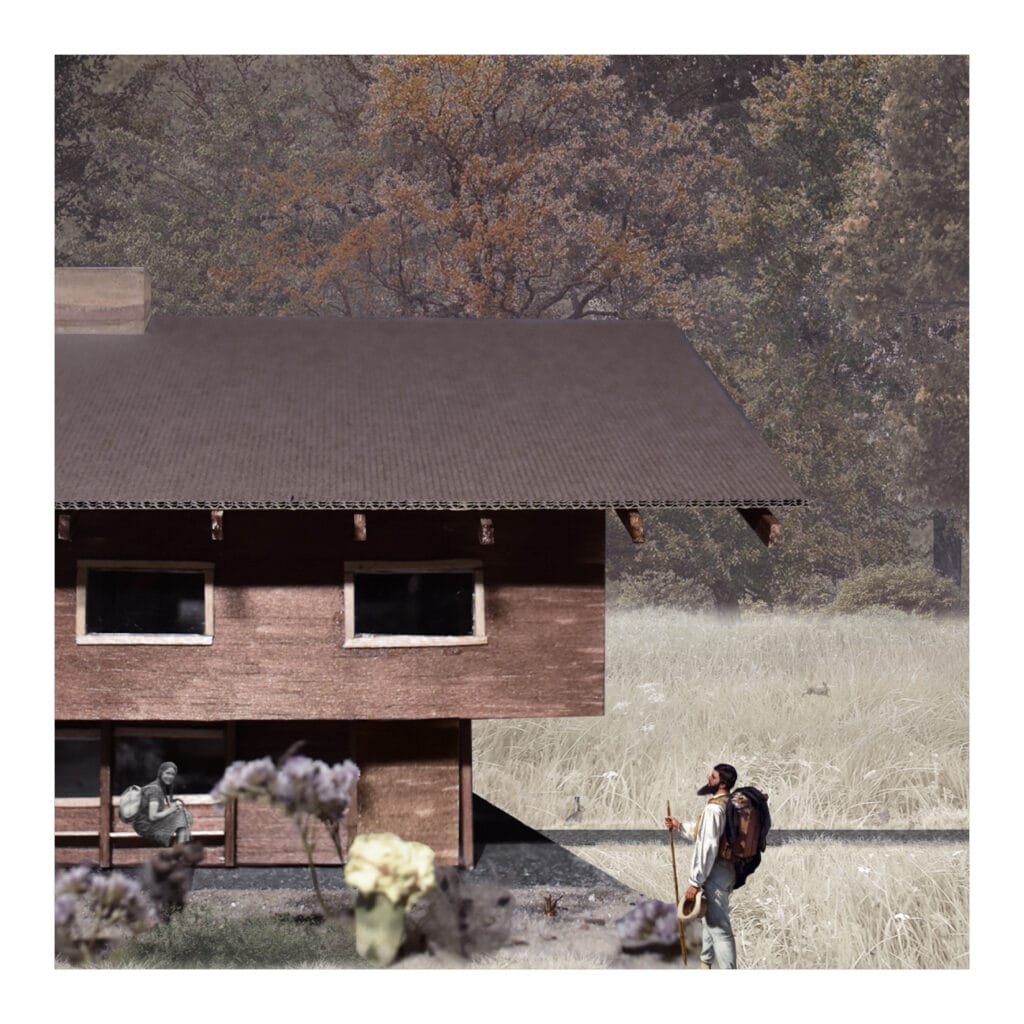
Agnieszka Wiecha
StudentThe Wanderer’s Haven

The project revolves around the design of a shelter and chapel situated along the Way of St. James in Ojcow National Park, near Cracow, Poland. The primary aim of the design was to establish a place of respite and contemplation for hikers on the Camino de Santiago, a renowned pilgrimage route leading to Santiago de Compostela in northern Spain. The project seeks to draw attention to traditional modes of travel, such as hiking, where wanderers can find moments of serenity, connect with the landscapes they traverse, and reflect on their journey. Such form of slow tourism brings people closer to natural and cultural heritage and gives them the sense of personal awareness. Notably, the chosen site aligns with the existing Camino route, which, despite being marked, lacks adequate facilities.
The project entails the creation of two structures that follow the rhythm of a pilgrim’s day. The chalet serves as a safe haven where weary travelers can find solace at the end of their first day’s walk, while the chapel marks the start of the next leg of their journey. The complex is strategically located in close proximity to the Way and harmonizes with it through the carefully designed architecture. The structures were arranged to form a cohesive narrative, both of which are linked to the Way, influencing the buildings’ shapes. As pilgrims enter the plot, they are welcomed by the shelter, offering them refuge under its roof. In the distance, the chapel beckons, signaling their passage the following morning, bathed in the first rays of the awakening sun.
The design of this complex is deeply rooted in the philosophy of vernacular architecture, emphasized through the use of local materials and typological consistency. The shelter’s framework is constructed from wood, enveloping a core of rammed earth to accumulate the necessary heat. This approach is mirrored in the chapel’s design, also employing rammed earth technology. The buildings embody a spatial reflection of the sacred and the profane. The chalet’s architecture pays homage to the Swiss-Ojcow style, reflecting the region’s traditions, while the chapel’s modest form adds new significance to its surroundings.
Life within the shelter revolves around the central core, which houses a kitchen and a fireplace room. Beyond its functional role, it fosters a sense of community among pilgrims. Soft beams of light filter through the skylight, illuminating the space and creating a unique ambiance. Surrounding this core, corridors offer a gathering place with windows overlooking the surrounding valley. The upper floor serves as a bedroom with a more expansive layout than the ground floor, providing an extensive porch where pilgrims can witness sunsets and anticipate their passage through the chapel.
The chapel takes on a transitional form, where light is carefully directed to illuminate the hikers’ path, distancing them from external distractions and prompting them to appreciate the simplicity of their journey. Combined with the twilight ambiance of the vaulted ceiling, this design creates a visually striking and memorable experience for pilgrims.












